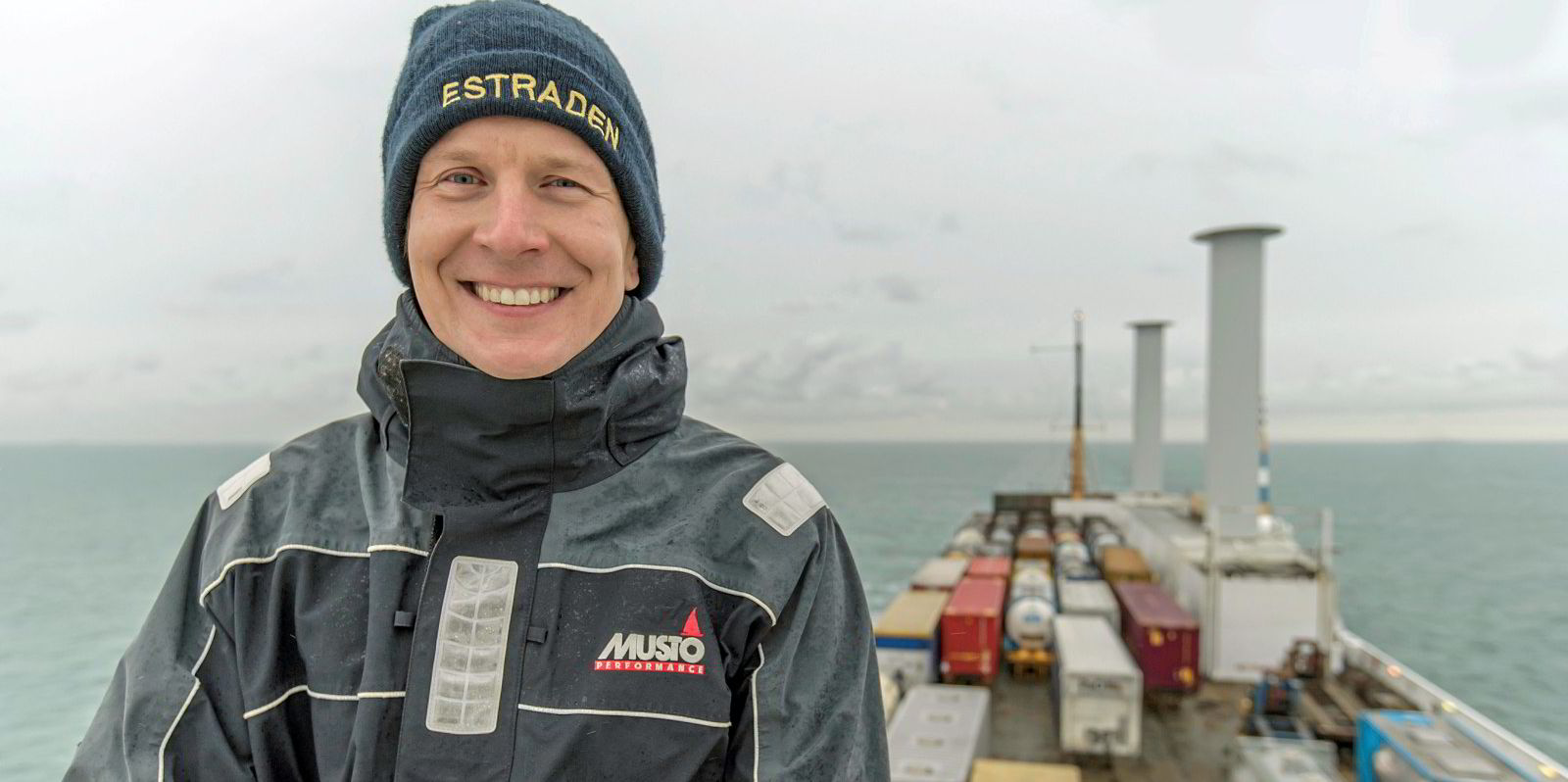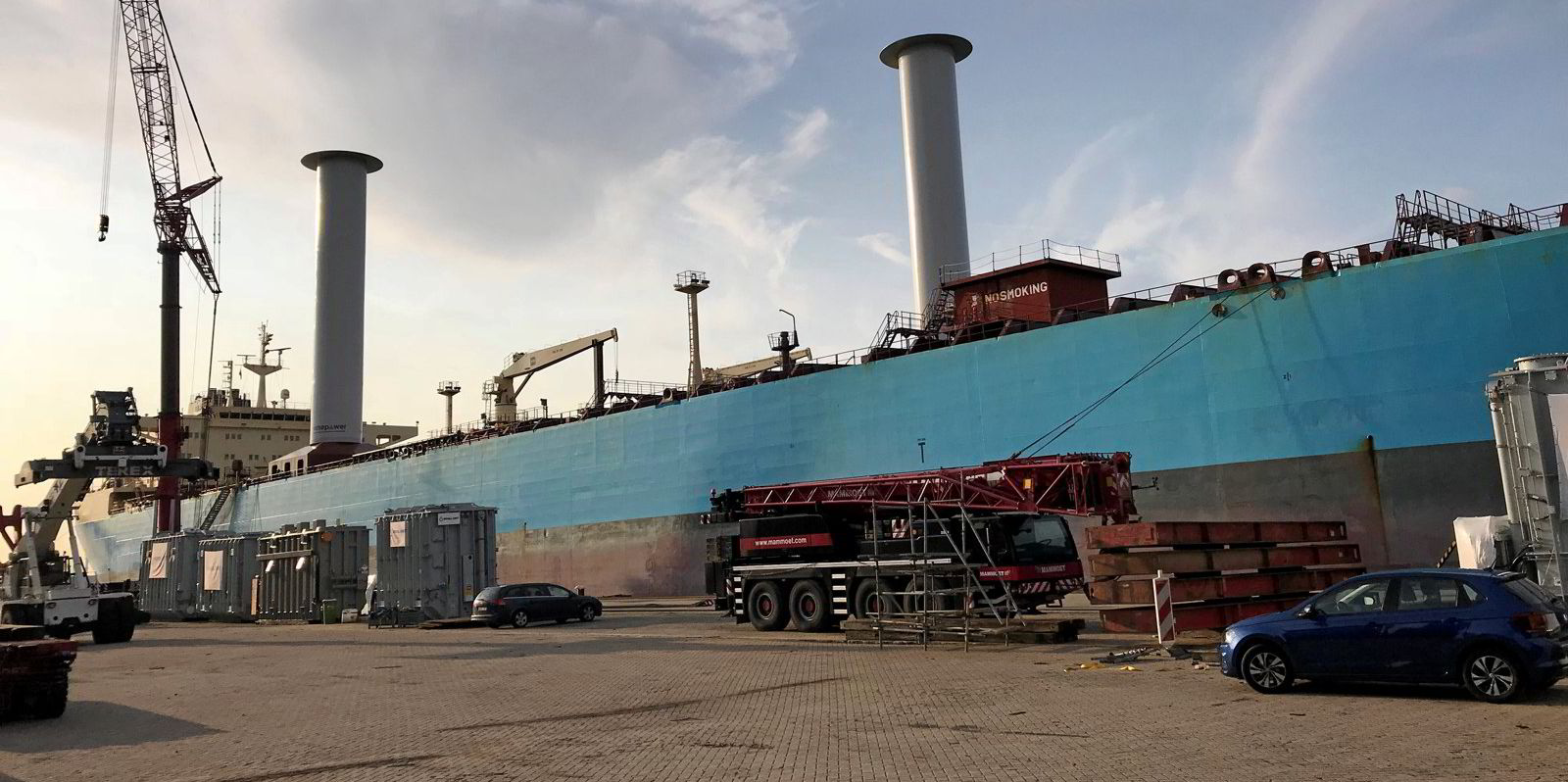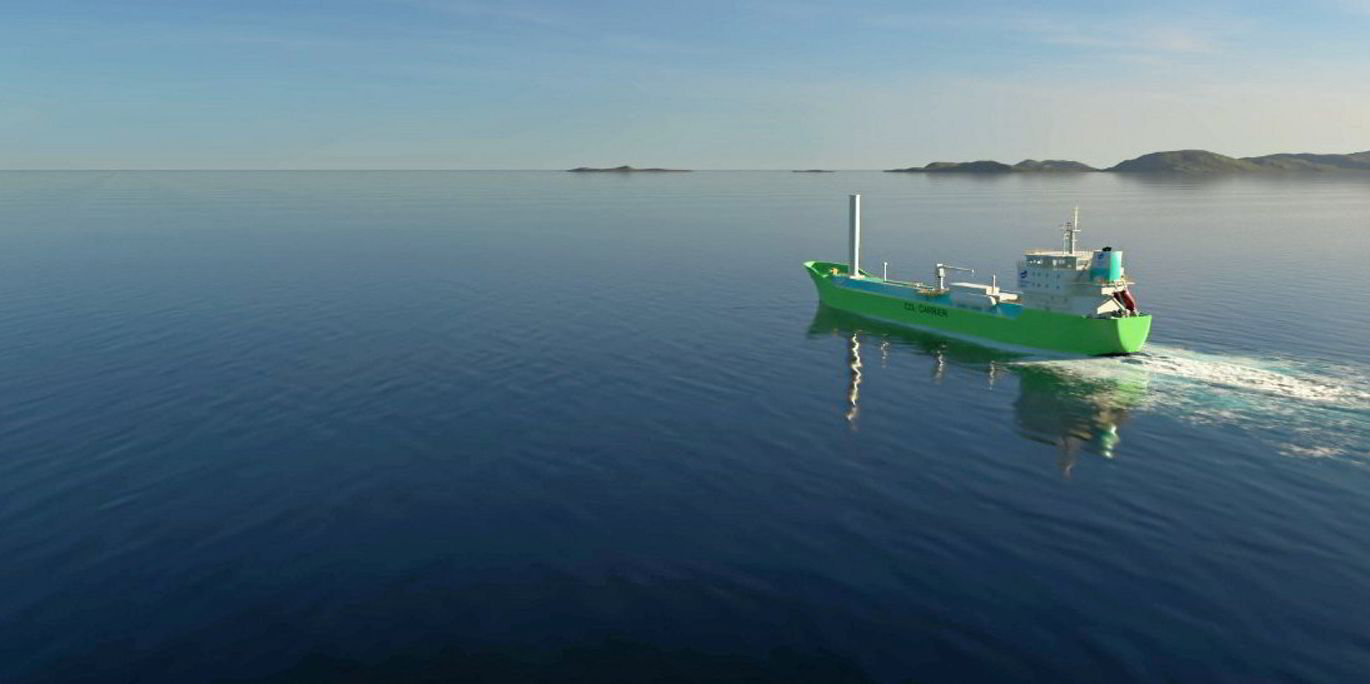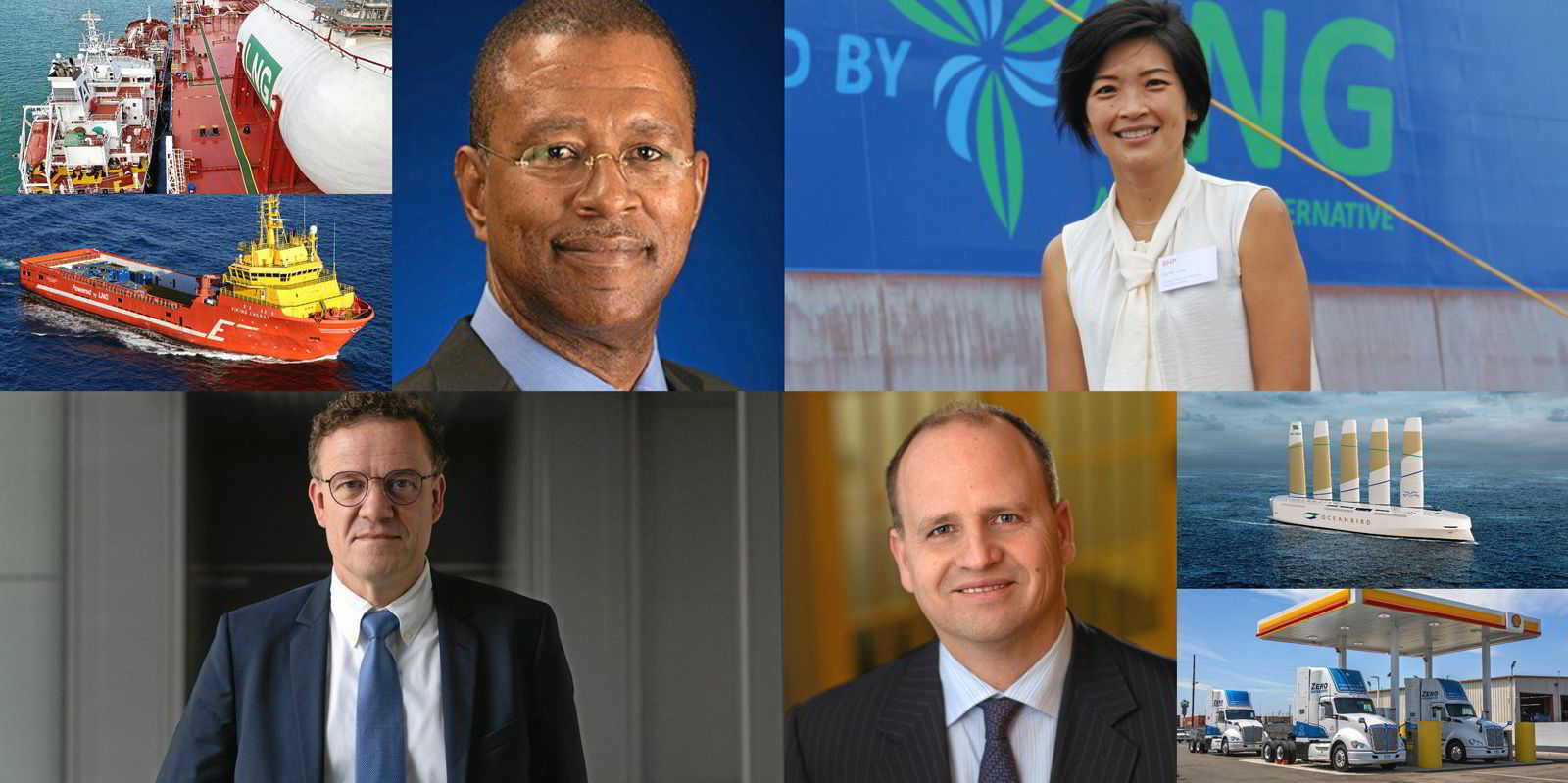Finnish sail power pioneer Norsepower expects to close his first fleet deals for rotor sails in the coming year.
Much of its marketing towards that goal is being done by the IMO with its upcoming emissions regulations.
The Tuomas Riski-led company is not yet profitable. It has been in business since 2012, and since 2014 has equipped six ships with from one to five rotor sails in single-ship deals. Four more installations are underway, including two CO2 carriers, with an undisclosed number in the pipeline — including for the first time fleet deals.
Riski optimistically looks toward a €1bn global market for rotor sails by 2030. Meanwhile, he hopes to turn the corner to profit by 2024, followed by an IPO or an acquisition by a larger shipping tech company as an exit for his present investors.
A set of rotor sails presently costs about €1m to €3m per ship to install, depending on their size, number and features. At current fuel prices, Riski sai investment pays for itself in about four years, and the kit is designed to last the lifetime of the ship if properly maintained.
His selling points right now are the IMO-mandated carbon intensity index (CII) and energy efficiency existing ship index (EEXI).
“We have a validated way to calculate change in both EEXI and in CII,” said Riski. “In roughly all cases we have been able to change the calculated CII with a minimum of one letter.”
The EEXI, which measures a ship’s theoretical efficiency based on its physical characteristics, is simpler to calculate than the CII, which measures performance over time on a scale from A to E and can be definitely calculated only in retrospect.
“To estimate the effect on CII, we have to make certain assumptions about the ship’s route and the average wind conditions,” said Riski.
Northern hemisphere routes offer some of the biggest gains, but Riski said sails can add power even in calmer equatorial trades. Route sensitivity means however that predictions are more approximate for tramp trading.
“For tramp trading we use the global average wind conditions of all routes as published by the IMO,” he said.
Riski explained that rotor sails are not wind turbines generating power, but structures that directly provide forward thrust as a sail does. Power from a ship’s main engine spins the rotor, which then creates thrust as wind moves around it, because of the lower air pressure on the side with faster-moving air.
The added thrust decreases the ship’s need for main engine power, and thus for fuel. The contribution of the rotor sail is measured in terms of equivalent engine power in megawatts, netting out the power needed to spin the rotor.
Ships with Norsepower sails range from Sea Cargo’ 1,775-lane metre, 8,800-dwt ro-ro SC Connector (built 1997) to Pan Ocean’s 325,000-dwt VLOC Sea Zhoushan (built 2021), which sails for Vale.
Most of the six ships whose data Norsepower publicises on its website feature single-digit percentage improvements in CO2 emissions or fuel efficiency. But SC Connector, on a North Sea route where wind conditions lend themselves to the technology, turned in 25% improvements.

Riski said the installation on SC Connector, a ro-ro operating in the North Sea with two big 35-metre tiltable rotor sails, led the IMO to revise upward the calculated contribution of rotor sails to EEXI.
Riski sees carbon-neutral fuels as the ultimate way to decarbonise shipping. When they come, they will be expensive.
“So a good starting point is to minimise the need for fuel,” he said.
Norsepower’s first fleet sale is most likely to come in bulkers or tankers, or just possibly ro-ros.
Riski said Norsepower is ready to scale up quickly for fleet deals to 20 units a year from a European plant and 50 per year from China, and then to double and triple that capacity by adding other manufacturing bases.
Meanwhile, there is already a secondary market for Norsepower’s rotor sails.
Its sole tanker installation to date, the 109,600-dwt LR2 tanker Maersk Pelican (built 2008), has already changed hands twice, and currently sails for Greece’s United Maritime under the name Epanastasea.
Riski had no information on how the ship’s two rotor sails affected its resale value, but VesselsValue reports that United Maritime paid $0.8m more for it than for a similar vessel purchased en bloc.







